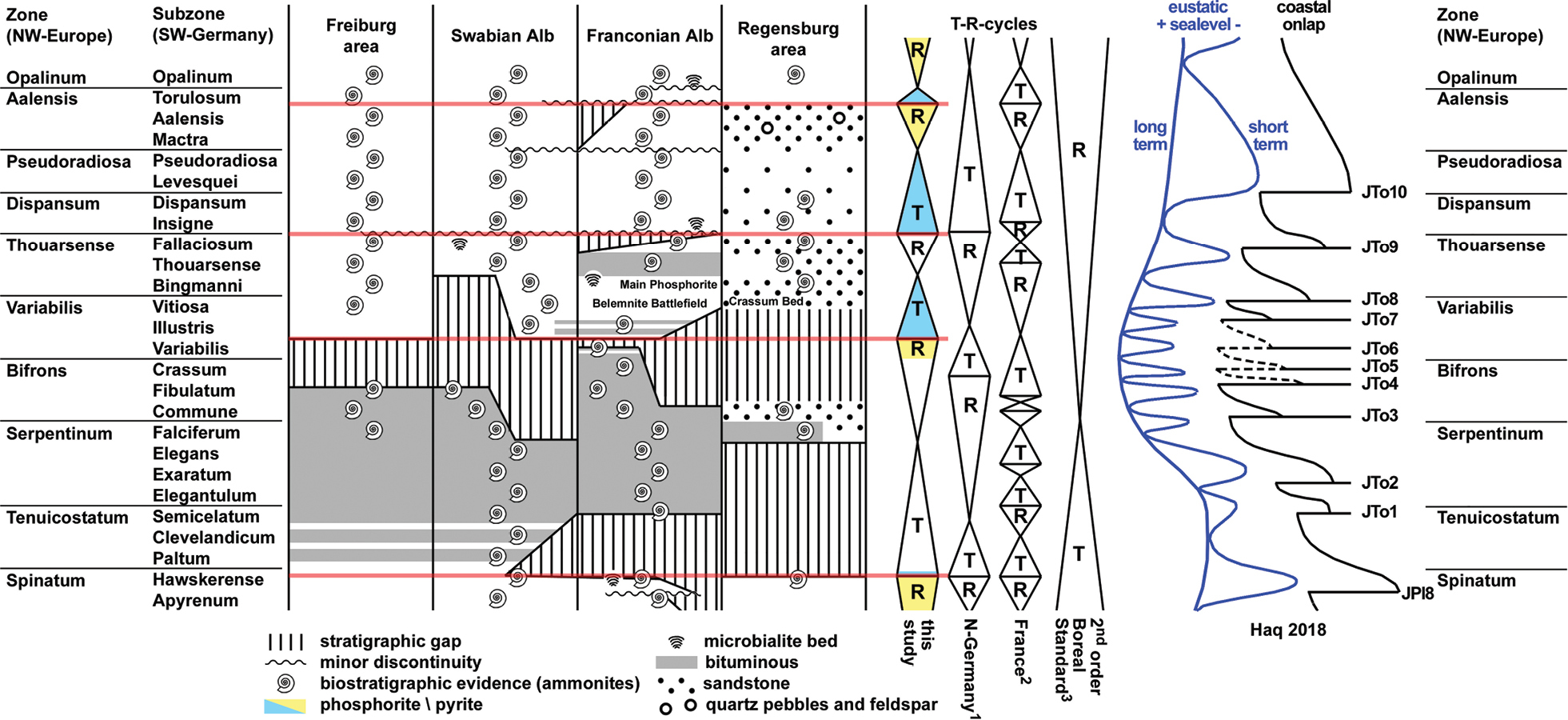
|
||
|
Sequence stratigraphic interpretation of the Toarcian succession in the Franconian Alb (including Ludwigskanal/Dörlbach section) and adjacent areas. Sedimentary succession and ammonite biostratigraphic evidence according to Pompeckj (1901), Krumbeck (1932b, 1943), Putzer (1939), Bauberger et al. (1969), Meyer and Bauberger (1998) (Regensburg area), Brockert (1959), Fischer (1964), Wiedemann (1966), Urlichs (1977a), Riegraf et al. (1984), Riegraf (1985a), Etzold et al. (1989) (Swabian Alb), Ohmert (1976), Knitter and Ohmert (1983), Ohmert et al. (1996) (Freiburg area), T-R cycles: 1 = third order sequences N-Germany (Zimmermann et al. 2015), 2 = third order sequences France (de Graciansky et al. 1998); 3 = second order sequences Boreal standard (de Graciansky et al. 1998; Jacquin et al. 1998). Eustatic sea level and coastal onlap according to Haq (2018). Note that the definition of sequence boundaries in Haq (2018) differs from the concept of T-R-sequences, with the latter bounded by maximum regression surfaces (Embry and Johannessen 1992; see also Simmons 2012). |